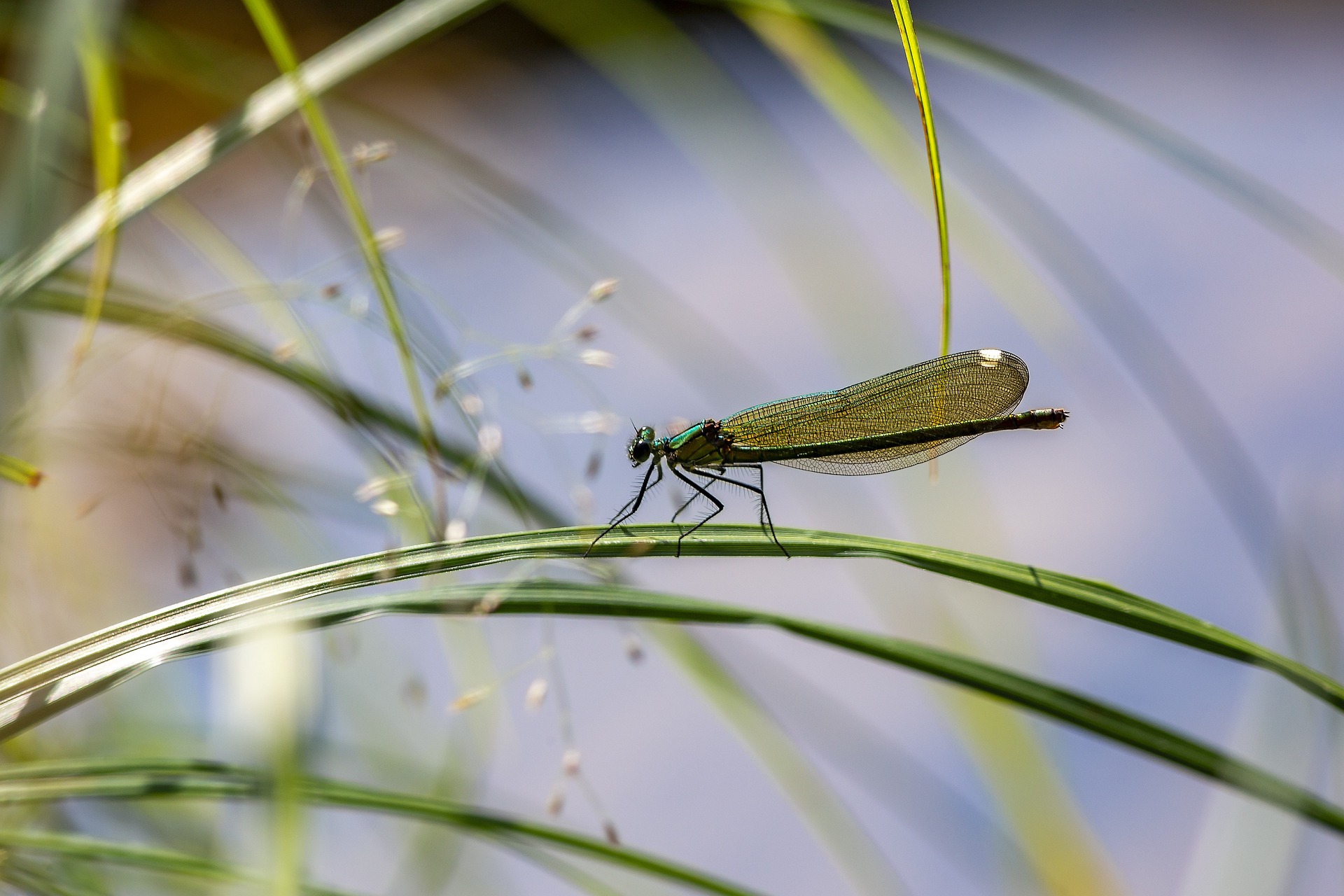That’s a lovely choice! The Beautiful Demoiselle (Calopteryx virgo) is an exquisite and easily recognizable damselfly, widely considered one of the most attractive insects in Europe. It is distinct from other damselflies due to its broad, dark, iridescent wings.
Here is a deep review of its key characteristics, habitat, and life cycle.
💎 Beautiful Demoiselle (Calopteryx virgo) Deep Review
1. Identification and Morphology
The Beautiful Demoiselle belongs to the family Calopterygidae (broad-winged damselflies).
| Feature | Male (Mature) | Female |
| Size | Large damselfly, body length up to 50 mm, wingspan up to 70 mm. | Similar size. |
| Wings | Wings are uniformly dark brown, black, or deep bluish-violet, with a strong metallic sheen. The wings are notably broad compared to other damselflies. | Wings are typically translucent brown or smoky-amber, often with a metallic green sheen, but not entirely dark. |
| Pterostigma | Absent or highly vestigial (a tiny, pale mark may be present, but not a true pterostigma). | Possesses a prominent white pseudopterostigma near the wing tip—a critical identification feature. |
| Body Color | Body is a vibrant metallic blue-green or coppery-green. | Body is usually metallic green or bronze-green. |
| Flight | Has a distinctive, flapping, butterfly-like flight rather than the rapid, direct flight of typical damselflies or dragonflies. | Similar flight pattern. |
2. Habitat and Distribution
- Geographic Range: Widespread across the Palaearctic region, spanning most of Europe (though it is rare or absent in the south-west) eastward across Russia to Siberia and Central Asia.
- Habitat Preference: The Beautiful Demoiselle is a habitat specialist, strictly tied to clean, unpolluted, slow- to moderate-flowing streams and small rivers.
- Key Requirements: It requires dense, lush vegetation along the banks, often with trees or bushes overhanging the water, providing dappled sunlight and ample perching spots.
- Indicator Species: Because of its reliance on clean, well-oxygenated water and dense riparian vegetation, its presence is a good indicator of high ecological quality in a river system.
3. Life Cycle and Behavior
Activity and Reproduction
- Flight Season: Typically flies from May to September, with peak activity in early to mid-summer.
- Territoriality: Males are highly territorial, actively defending stretches of riverbank against other males. They perform elaborate courtship displays to females, which involve hovering in front of the female and rapidly beating the wings to showcase their iridescent colors.
- Perching: Both sexes are often seen perching on low vegetation close to the water, where the males display their wings, often holding them half-open.
Mating and Larvae
- Mating: Mating occurs in a wheel posture, usually perched on vegetation near the river.
- Ovi-position (Egg Laying): The female is unique in that she deposits her eggs submerged beneath the water. She crawls down a stem or piece of debris, fully submerging herself for several minutes, and uses her specialized ovipositor to cut slits into the submerged plant material where the eggs are laid. The male often guards her while she is underwater.
- Larval Stage (Nymph): The nymphs are camouflaged, mottled brown, and live among the roots, submerged wood, and plant debris at the bottom of the river. The larval stage is long, usually lasting two to three years, which is why the species is sensitive to river pollution and disturbance.
4. Conservation
While generally common across its range, the Beautiful Demoiselle is sensitive to environmental degradation. River pollution, heavy siltation, and the removal of riparian vegetation pose the greatest threats to local populations. Maintaining healthy, naturally vegetated banks is crucial for its survival.
Views: 1644
Subscribe to the newsletter:
